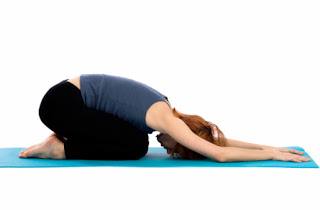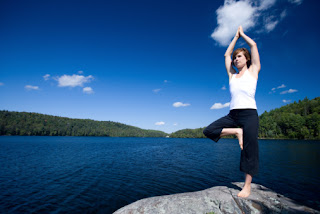By Faye Martins
In today's charged up, plugged in, needed-it-yesterday world,
it's no wonder insomnia is one of the most common sleep disorders, affecting, at least, half of all adults at some point in their lives. We need sleep for
our bodies to repair themselves, and for our minds to sort out the details of
the day in preparation for the next.
Health Problems
The inability to sleep well, or sometimes
even at all, can also lead to high blood pressure, weight gain, and heart
disease among other conditions. Some people experience a variety of mental and emotional problems due to sleep deprivation. Needless to say, driving, working, and thinking are impaired by lack of sleep. Medications are often only a temporary
solution for relieving symptoms, but not the underlying cause, and many can have
some nasty repercussions. Treating insomnia with yoga, however, is not only
effective, but has been shown to have pleasant and positive side effects.
Yoga Therapy's Approach
Yoga therapy focuses on a person's well-being at all levels:
physical, emotional, mental, and spiritual. It alleviates stress by quieting
the mind and relieves tension with gentle stretching and restorative poses,
often increasing blood flow to the sleep center of the brain, helping to
regulate the sleep cycle.
Recent Studies About Yoga and Sleep Cycles
A 2004 study by Harvard Medical School in Boston
found that daily asana practice actually improved the quality of sleep,
including total sleep time, and onset latency (the time it takes to fall
asleep. Another study, conducted between 2006 and 2009 by the University of
Rochester Medical Center, linked yoga therapy to better sleep quality,
lessened fatigue, and reduced use of sleep medications in cancer patients.
Solutions
The next time you sleep eludes you, try some calming breathing techniques,
or pranayama, and follow with a few gentle poses to help your body relax and
prepare for rest. Suggested poses include Balasana, which is pictured in the upper-left section of this page. This extended variation releases tension in the arms shoulders, chest, stomach, and back.
Other postures to practice are Uttanasana, a deep forward bend in
which you simply "hang" from your hips for several deep breaths,
Viparita Karani, an "inversion" style asana in which you lie on your
back with your legs supported by the wall, and perhaps the most calming pose of
all, Shavasana, or the Corpse pose. You can perform this simple pose in bed to
unwind from the day and help yourself drift off to sleep. Lie on your back,
noticing, tensing, and relaxing each part of your body in turn, emptying your
mind of competing thoughts, and eventually entering a state of deep relaxation.
Yoga therapy is certainly highly beneficial and can lead to a state of quality sleep, deeper and more restorative. Your mind, body, and
soul will thank you for making Yoga techniques a regular part of your life.
© Copyright – Aura Wellness Center – Publications Division
To see find out more about yoga or to see our selection of affordable courses, including our online 500 hour yoga teacher training intensive program, please use the yoga resources on the right side of this page.
To see find out more about yoga or to see our selection of affordable courses, including our online 500 hour yoga teacher training intensive program, please use the yoga resources on the right side of this page.
If you are a teacher, yoga studio manager, blogger, e-zine, or website publisher, and are in need of quality content, please feel free to use my blog entries (articles). Please be sure to reprint each article, as is. Namaste!









